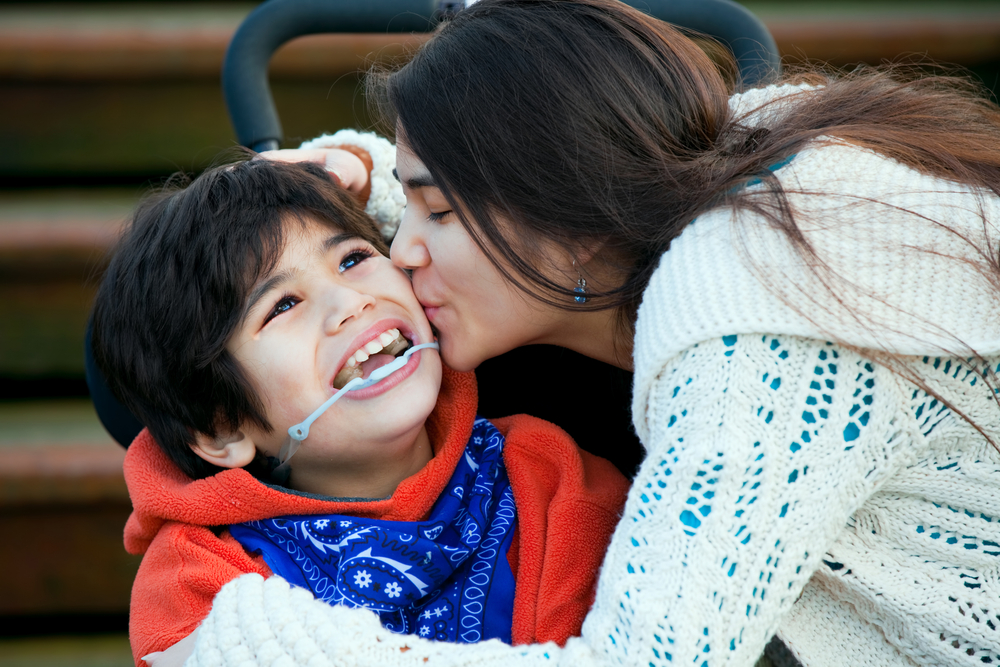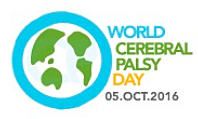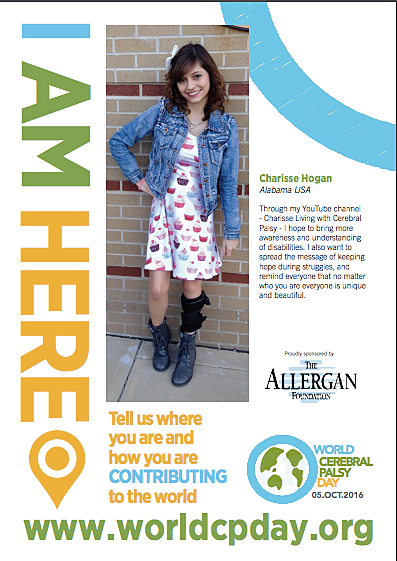For World Cerebral Palsy Day, Learn, Share and Make Lives Better

 Today, Oct. 5, marks World Cerebral Palsy Day, a social movement of, by and for the global cerebral palsy (CP) community dedicated to ensuring that everyone with CP has the same rights, access, and opportunities as anyone else.
Today, Oct. 5, marks World Cerebral Palsy Day, a social movement of, by and for the global cerebral palsy (CP) community dedicated to ensuring that everyone with CP has the same rights, access, and opportunities as anyone else.
The World Cerebral Palsy Day campaign, which is coordinated by the Australia-based Cerebral Palsy Alliance, is intended to empower participants to take action locally so as to contribute to a global movement for change in attitudes and policies pertaining to this group of disorders — caused by damage to the developing brain, either during pregnancy, birth, or shortly after birth.
World CP Day’s organizers say that CP is the most common childhood physical disability, affecting on average 1 in every 500 people (more than 17 million worldwide). It is also one of the most poorly understood conditions.
Event organizers say not enough money is being allocated to fund CP research, and that far too many societies are satisfied with keeping people with CP “out of sight, out of mind, and out of options.” They note that recent global surveys, conducted via Skype interviews and emails, revealed that CP patients everywhere encounter frustrating realities, a state of affairs they maintain is not just a human rights issue, but that also directly impacts their social and economic well-being, so that the artistic, economic, social, scientific, and political contributions of 17 million people are simply not fully being realized.
The World CP Day team maintains that it does not have to be this way — especially in 2016, with information available and potential for support existing. The problem is that many people simply lack access.
 World CP Day was conceived as a vehicle of outreach and communication, to increase awareness of the issues and problems — from basic rights to better opportunities — facing people with CP. The goal is also to pool available resources, energy, and knowledge to close the gap between everyday circumstances experienced by people with CP and their real potential, and to share success stories and best ideas, so that solutions which have been proven to work can be applied.
World CP Day was conceived as a vehicle of outreach and communication, to increase awareness of the issues and problems — from basic rights to better opportunities — facing people with CP. The goal is also to pool available resources, energy, and knowledge to close the gap between everyday circumstances experienced by people with CP and their real potential, and to share success stories and best ideas, so that solutions which have been proven to work can be applied.
Organizers have, through consultation with the CP community, identified six key points to achieve collective success in knocking down the biggest barriers confronting people with CP, irrespective of where they live:
1) Increasing public awareness and confronting ignorance and the stigma it can create, by broadening the scope of understanding of what CP is and is not. The team noted that CP patients can experience a spectrum of responses from others in their communities, including misguided sympathy, or even pity, which while well-intended, infantilizes the person with CP and prevents them from having essential life experiences. At the other extreme, CP is viewed through deep-seated cultural beliefs and superstitions, from the condition being contagious to it bringing shame to a family. As they note, many benevolent-minded people still find it difficult to make eye contact or to communicate with someone who has CP.
2) Advancing civil rights by ensuring that governments at local, regional, and national levels move beyond passing broad proclamations and high-sounding legislative protections. They want concrete action to guarantee that the basic rights of people with CP are recognized and equal opportunities given.
3) Improved medical and therapeutic care, informed by the latest and best information for diagnosis, prevention and treatment of CP, so that doctors and therapists are equipped to make better decisions earlier in the process. In the developing world, in particular, CP could be prevented in a good number of cases if mothers and babies had better access to good medical care, and if primary clinicians were equipped with better information and tools. Because there is no single test that provides a definitive CP diagnosis, effective diagnosis may require a combination of tests, such as CT scans or MRIs, which are not widely available, and clinical assessment, for which many primary caregivers have not been trained. The result is that CP is often diagnosed late, with children missing vital care and stimulation during the critical months of brain development after birth.

 4) Provide the most useful advice, support, and inspiration for the community of people living with CP, their families, and others to address quality of life issues to help them thrive, and find enjoyment and fulfilment. Several needs involve basic matters, like making adult diapers available in countries where they now are not.
4) Provide the most useful advice, support, and inspiration for the community of people living with CP, their families, and others to address quality of life issues to help them thrive, and find enjoyment and fulfilment. Several needs involve basic matters, like making adult diapers available in countries where they now are not.
5) Helping educators to create experiences that will encourage the broader community to embrace people with CP, and provide them with education opportunities equal to those enjoyed by others. Barriers that prevent children with disabilities from attending school have been identified by The World Health Organization, and range from lack of legislation, policy, and plans, to inadequate resources, shortcomings in curriculum and ways of teaching, violence, and bullying. The key to education success is having enough qualified educators and support specialists to ensure that all receive a proper education in a supportive environment.
6) Overcome the single greatest lack in the lives of people with CP — the ability of all to live to their full potential and contribute to their society. Needed is the recognition that every individual has unique potential to contribute economically, artistically, socially and/or politically, and that not being able to make such contributions is both a personal and societal loss.
The goal of World CP Day is not to replace or compete with efforts of any of the national and regional Cerebral Palsy organizations, but to help empower them and the people they serve by providing unprecedented access to information and collaboration. World CP Day is a truly global platform for the community of people living with CP, people who provide support and care for those with the disease, people who are at the forefront of medical and therapeutic progress, and, finally, for anyone else who needs to know about CP which, incidentally, is everybody else.
The World CP Day team encourages participants to choose one or more of the six key issues to champion for change, and to share their stories.
Early next year, the best stories will be showcased, and the community will be asked to vote for their favorites for World CP Day Awards 2016.
For more information, visit this link.
Sources:
World Cerebral Palsy Day
Cerebral Palsy Alliance


